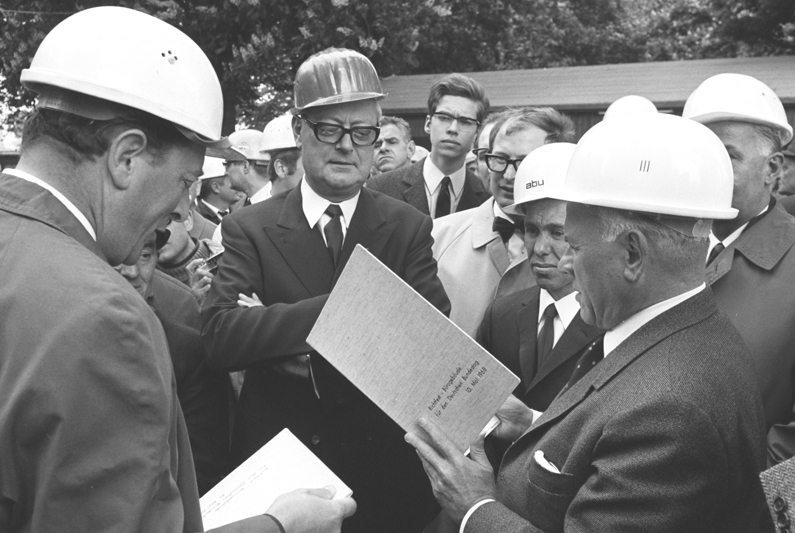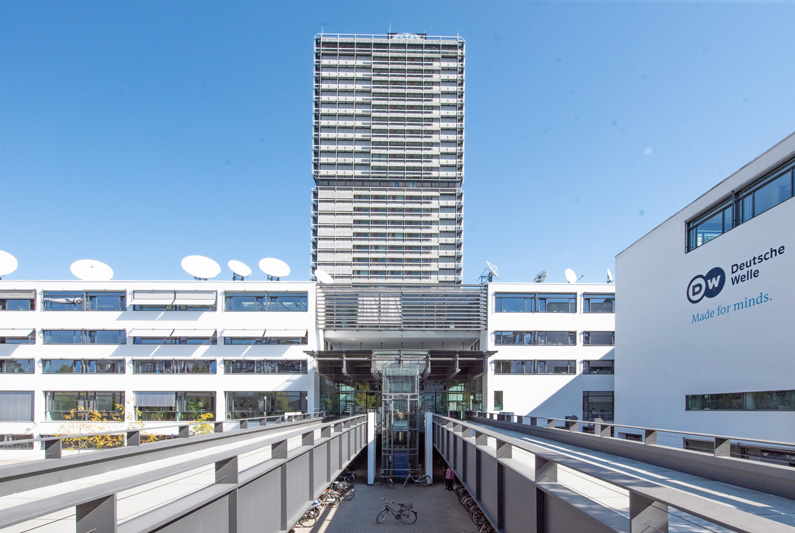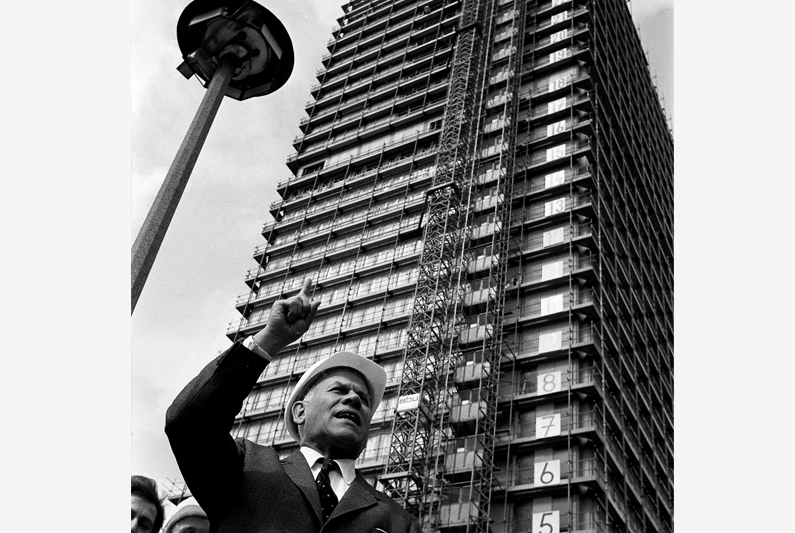Until 1999, the "Langer Eugen" office tower, which is named after Bundestag President Eugen Gerstenmaier, was the Bundestag office building, 2009.
ullstein bild - Ulla Giesen
The "Langer Eugen" office tower lobby was designed by the architect Egon Eiermann, 1969.
Südwestdeutsches Archiv für Architektur und Ingenierbau Karlsruhe, Werksarchiv Egon Eiermann
Bundestag President Eugen Gerstenmaier speaking at the "Langer Eugen" topping-out ceremony on 10 May 1968.
Bundesregierung/Engelbert Reineke
The building, which is located in Bonn, was constructed to meet the needs of Bundestag members for more office space. Since 2003 Germany’s international broadcasting service "Deutsche Welle" has been beaming its programs from a building right next door, 2018.
Stiftung Haus der Geschichte/Benjamin Westhoff
The 30-storey "Langer Eugen" office tower was Bonn’s tallest building back then, 10 May 1968.
Bundesregierung/Engelbert Reineke


